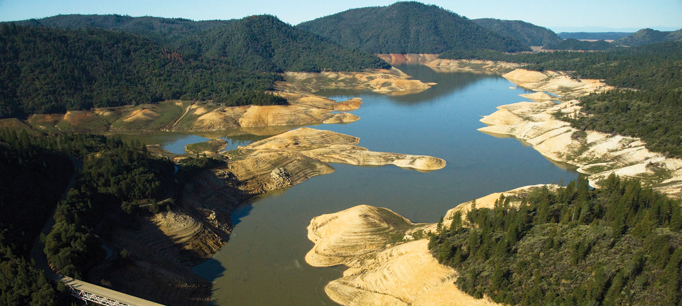This is part of a continuing series on the impact of the drought.
Southern California got a thorough soaking in late February and early March, with intense storms that caused localized urban and coastal flooding. Northern California also received some much needed rain and snow. As officials pointed out during and after this wet interlude, it helped, but it was not a drought buster.
So where did all that rain go and did we miss an opportunity to improve our water supplies?
In urban Southern California and the San Francisco Bay Area, most of this water was lost to the ocean. This loss comes from both the nature of the storms and our long-standing approaches to stormwater management.
First, like many of California’s winter storms, these storms were very intense. When heavy rains fall on urban landscapes, all those hard surfaces—roads, roofs, gutters—gather and shed water quickly rather than allowing it to soak in to recharge groundwater.
Second, the way we manage most of this runoff in coastal areas ensures that it goes to the ocean. During the post-WWII expansion of urban California, planners and engineers viewed storm runoff as a nuisance to be disposed of as quickly as possible. The iconic California urban stream—straightened, channelized, and lined with concrete—is designed to move water rapidly out of neighborhoods and route it to the ocean. This design has made places like the Los Angeles River better suited to filming car chases than to harnessing local water supplies. Moreover, this fast-moving stormwater is a major source of pollution of California’s bays, beaches, and watersheds. Regulations to limit this pollution have become increasingly strict, making this one of the costliest water management headaches for many California communities.
Fortunately, this antiquated style of stormwater management is now changing. Many of the state’s urbanized areas have begun to capture and store stormwater in groundwater basins for later reuse. Sustainable stormwater management can be accomplished in many ways: installing pavements that soak up rain instead of repelling it, designing landscapes and streetscapes to capture runoff, replacing hard urban landscapes with parks, and routing stormwater into settling basins. These projects achieve multiple benefits: in addition to increasing local water supplies and greening our neighborhoods, they help reduce water pollution.
All of these efforts are still a work in progress. Drought legislation signed by the governor will allocate some additional state funds to stormwater projects. This money is a welcome boost, because funding stormwater projects with local dollars is difficult to accomplish. As a forthcoming PPIC report on water system finance shows, stormwater is a “fiscal orphan” —an area where our current funding rules (including two-thirds majority voting requirements to pass local special taxes) limit the ability of local managers to raise the resources they need to make smart community investments. Reshaping our urban environments to make stormwater an asset, rather than a liability, will take time and money but it will pay off in future droughts.



